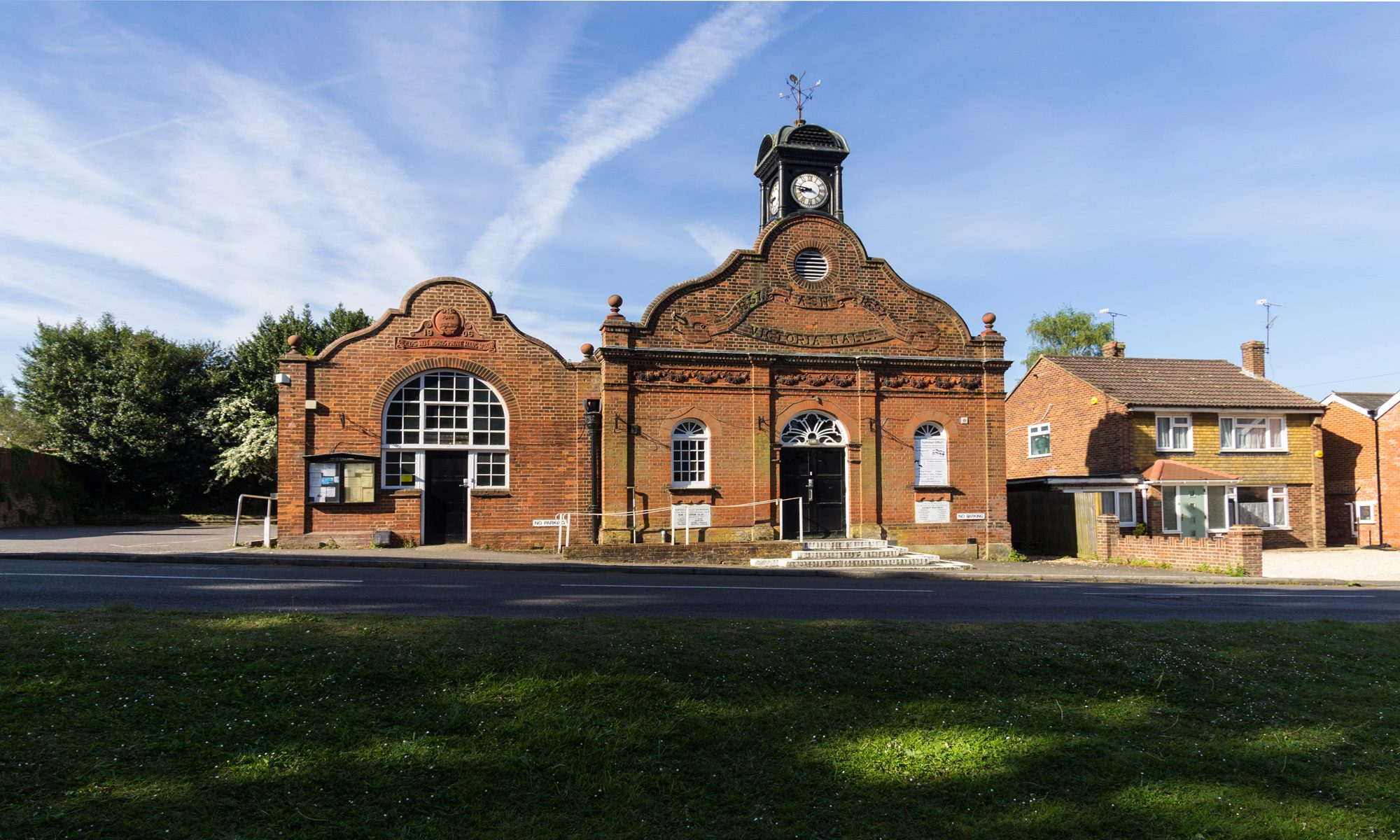Victoria Hall Clock
Who doesn’t check their watch as they pass the old village hall? But do they realise how it came to be there?
Well, three years after the hall was built, to be precise on 25 July 1900, a turret made of old English oak, with a weather vane and a three-faced clock, with tubular bells for striking the hours and chiming the quarters was presented by Dr Chester to Victoria Hall in memory of his mother, Charlotte Ellen Chester, who died on the 23 October 1898.
The Hall was packed on the night of the presentation and entertainment was arranged for the occasion with about 300 people attending and even standing room was unavailable. The following is a summary from a local press notice:
“The donor of the clock arrived just before eight, and was received with hearty cheers.
A few minutes later the programme opened with a pianoforte duet, by Mrs O Inlane and Miss ME Wallis. Mrs Ormerod sang Mr Payne’s song The Ash Victoria Hall, set to music by WH Bates, which took the place by storm. Mr WS Stevens gave They all love Jack. Miss Howard acquitted herself well in the flute solo with pianoforte accompaniment, La Fille de Madame Angot. Mr HT Harris well pleased his hearers with a brace of humorous songs. Mr J Payne was again to the fore his spirited poem Tommy Atkins called to duty being recited with marked effect by the Hon Mrs Gifford.
At ten minutes to nine a short speech was given by Dr Chester, before he finally handed over the clock in motion. While the clock was striking nine, Mrs Omerod sang The Song of the Clock words by J Payne, music by Madame Gwatkin. This concluded with We thank you for your gift this day, followed by the chorus which ended with Hip, Hip, Hurray! Hurray! Dr Chester then addressed the assembly relating to the use-fulness of a clock, and the value of time.”
The applause and enthusiasm that night showed that the inhabitants highly appreciated Dr Chester’s kindness and his continuous generosity. Some time afterwards Dr Chester found the striking power of the clock did not comply with the terms promised, viz. to be heard a mile away. To avoid litigation, the supplier agreed to take it back under mutual concessions. Mr Payne, on behalf of Dr Chester, interviewed a London turret clock firm called “Benetfinks”. They agreed to comply with the Squire’s wishes, providing a deeper well was dug for the weights to descend into. (This meant that the well finished up being about 50ft deep.) Dr Chester agreed to do this, but in excavating to reach the required depth a thin quicksand substrata was met, causing some months of special work. The local contractor George Kemp had difficulty coping with this, as continuous pumping was needed to keep the water in subjection. Being a cost plus job Dr Chester’s pocket was badly hit, and his patience tried over the amount of time it took. A letter sent from George Kemp to Dr Chester shows that he only reluctantly took the work on and that he had to subcontract work to a well sinker. Things between client and contractor were no doubt difficult, in fact Kemp at a midway point in the work, asks to be paid up to date and do you wish for me to carry on or not?
There are three cables with 39 weights operating the mechanism, which in total weigh 113 stone. In 1937 the weights became detached and fell into the water, and although the clock kept time it did not chime again until 1965 when an underwater diving club rescued the weights from the bottom of the well. Like us the ravages of time have their way and in 1990 over £16,000 pounds was spent on renovating the oak casing for the clock. As early as 1910 hall records show that replacements were needed, when 4 new hammer springs at a price of 1/6d each were ordered from a Coventry firm named Harrington, Latham & Co. The clock is now in the care of Ash Parish Council who have fitted an electric winding system. It is to be hoped that the old weighted winding mechanism will be kept in place so that the history associated with the old Village Clock is not lost.
